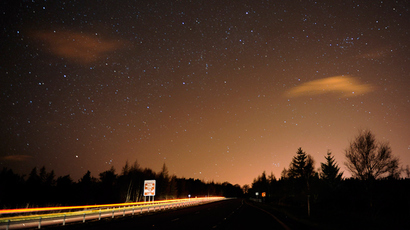Two amazing cloudy 'super-worlds' spotted by Hubble telescope

Two teams of scientists using NASA’s Hubble Space Telescope have discovered thick cloud layers in the atmospheres of two nearby exoplanets: a "warm Neptune" and a super-Earth. The study could help to identify potentially habitable Earth-like planets.
The two planets are among the closest to our solar system found so far, Sciencerecorder.com reported.
The "warm Neptune", classified as GJ 436b, is 36 light years from Earth in the constellation Leo. A bit larger than our own Neptune, it orbits much closer to its host star. And unlike the icy temperatures on the solar system’s Neptune, GJ 436b’s surface temperature is blazing hot – more than 500 degrees Celsius.
The super-Earth, named GJ 1214b, has a radius 2.7 times that of Earth and is around 40 light years away in the constellation Ophiuchus.
Super-Earths are planets with masses between that of Earth and Neptune. Because such planets aren’t found in our solar system, their physical characteristics are still largely a mystery.
One research team, led by Heather Knutsen of the California Institute of Technology in Pasadena, studied the atmosphere of GJ 436b and was impressed not with what they found – but with what they didn’t find. Hubble revealed “no chemical fingerprints whatsoever,” according to a HubbleSite news release.
The second team, led by Laura Kreidberg and Jacob Bean of the University of Chicago, discovered the same was true of super-Earth GJ 1214b.

The most likely reason for the absence of chemical signatures would be a thick layer of high-altitude clouds blocking the view, the scientists told Scencerecorder.com.
“You would expect to find very different kinds of clouds to form on these planets than you would find, say, on Earth,” Kreidberg said to UChicago News. The scientists believe those clouds could consist of potassium chloride or zinc sulfide.
“Super-Earth and Neptune-class planets collectively represent an intriguing and populous type of extrasolar planet whose exotic atmosphere may have no true analogies in the solar system,” wrote Julianne Moses of the Space Science Institute in Boulder, Colorado, in her commentary on the two separate papers, the LA Times reports. Moses was not involved in the studies.
Planets like GJ 436b and GJ 1214b can be observed as they pass in front of, or transit, their host stars. This gives scientists a chance to study the planets in more detail as starlight filters through their atmospheres, according to the authors.
The researchers describe their work as an important milestone on the road to identifying potentially habitable, Earth-like planets beyond our solar system. The results of their study are set to appear in the Jan. 2 issue of the journal Nature.
“We really pushed the limits of what is possible with Hubble to make this measurement,” said Kreidberg. “This advance lays the foundation for characterizing other Earths with similar techniques.”














